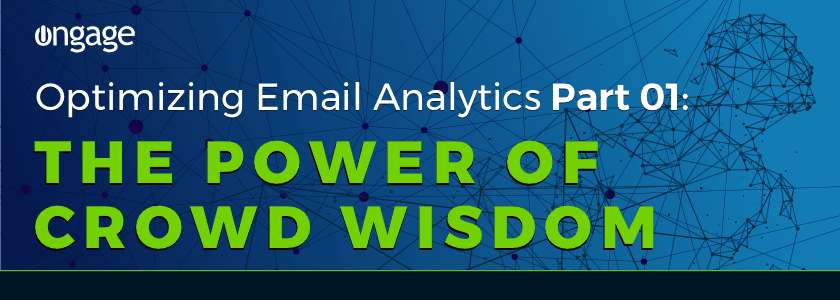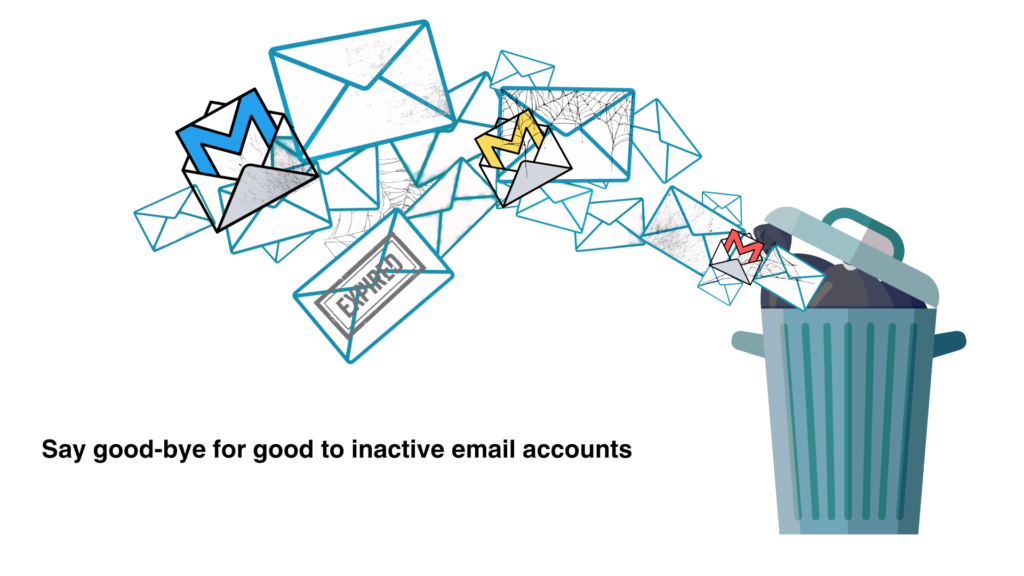Today, when email marketers dive deep into their campaigns, there are dozens of parameters to consider, and each one is more important than the next. From initial analytics such as open rate, click rate and click through rate, to in-depth analytics such as post-click engagement, conversion, cross campaign engagement and more, analytics are the key to improving campaign effectiveness and increasing overall ROI.
By aggregating the data and analyzing it, brands can improve their understanding of their audience’s needs, and optimize campaigns accordingly. When data is managed effectively, it can help brands create hyper-target campaigns, ensuring the right promotion or information reaches the relevant person, which in turn increase conversion and profitability.
Beyond improving profitability, when brands understand their email marketing data and use it to truly understand their consumer needs, they can improve engagement and brand reputation, thus guaranteeing their long term success in their industry.

The complete
deliverability
handbook
Read the most significant, most organized volume of information written about email deliverability.
Understanding the Email Marketing Funnel
The modern email marketing funnel is more than a single email; it is a complex structured series of emails designed to maximize campaign effectiveness.
By analyzing the campaign information, marketers can understand what drives consumers to open emails, where their users engage with their brand, and what triggers conversion and so on. To do this, email marketers need to examine nearly every aspect of a campaign, with the goal of finding the right combination that will drive a reaction from the end users.
Since email funnels often consist of multiple emails sent in succession based on the recipients behavior – such as whether or not the campaign was opened, if the CTA was clicked, and if a particular reaction took place (conversion) – it is imperative to have an email marketing platform that aggregates information based on parameters in a way that can be cross referenced.
Some of the key parameters that email marketers need to consider when examining the effectiveness of their email funnels include the number of emails delivered, the open rates (unique and overall), the click through rates (unique and overall), the number of unsubscribes and complaints, the revenue generated and the sum value per conversion.
By testing these parameters as they compare within the entire funnel, email marketers can improve their understanding of their customers’ journey, improving conversion and revenue generation.

via email
By signing up you are agreeing to our Terms of Service
Your data will be handled in accordance with our Privacy Policy
Diving Deep Into the Parameters that Matter Most
The first piece of data that email marketers have at their disposal when an email is sent, whether a single email or one that is part of a funnel, is the delivery and open rates the campaign received. Understanding the open rates and examining how to improve them is the first step towards improving overall campaign effectiveness and maximizing revenue generation and ROI.
Having a high open rate may indicate of the quality of the subject line as well as the inbox placement your ESP/SMTP provider has. A high open rate can also be an indication of the quality of the mailing list, the sender’s reputation or past interactions with recipients – all parameters email marketers need to care deeply about if they want to continually improve their email marketing efforts.
Alongside open rates, email marketers need to understand if all the emails they sent out were actually received. Having a low soft bounce rate coupled with a high open rate is a good indication of the inbox placement a campaign receives. Any increase in soft bounce rates, combined with a decline in open rates, might indicate a negative effect on inbox placement and deliverability, making it critical for email marketers to consider when examining campaign results.
Beyond providing insight into the quality of your selected vendor on the particular segment in question, knowing open rates can help email marketers predict engagement and click through rates.
Understanding click through rates for each segmentation of your list is critical for understanding how recipients engage with each campaign and determining the content that drives the most conversions. Once a company is able to determine the content that drives engagement per segment by tracking opens and clicks, creating content that is designed for conversion becomes simpler, ultimately reducing the time email marketers spend per campaign.
The Email Marketing Activity Book for Kids

Determining What Works by Split Testing
For email marketers looking to improve campaign effectiveness, it is necessary to go beyond open rates and clicks in order to try and figure out the precise combination of elements that trigger conversion per segment. The key elements often examined include the subject line, email content, CTA, and the time and date of email delivery.
To understand which element has the strongest impact on the end users, email marketers need to isolate and test these key parameters individually – also known as split testing or A/B testing. Doing so will enable them to gather the data they need to see what impacts the campaign in the most beneficial way. For example, some companies may deduce from their data that when they use images in their campaign, they have more clicks. Ecommerce companies for example, may see stronger conversions and revenue generation if they showcase products recipients already viewed in their emails.
Today, email marketers also have the option of split testing parameters beyond what the end user sees. Testing multiple ESP’s/SMTP’s is possible with a strong email marketing platform that enables multiple vendor management. The reason it is important to examine the email provider as well as the subject line, content, time and date etc. is because, as with open rates, some ESP’s and SMTP’s are more suited for certain audiences than others.
Understanding what parameters impact campaign effectiveness and how changes impact opens, clicks and conversions will ultimately yield better results and stronger engagement while reducing costs.
Looking out for Trends in Analytics
When aggregating information of a campaign post delivery, it is necessary to monitor negative trends in order to ensure brand reputation and inbox placement is continually upheld (and, if possible, improved). By examining soft and hard bounce rates alongside unsubscribes over time, email marketers can routinely monitor operations and look out for declining trends that impact deliverability and inbox placement.
Trend monitoring can also be used in order to assess the overall health and performance of the entire email marketing operation. By examining different parameters overtime, it becomes easier to recognize the trends that will have the strongest results on campaign effectiveness. Trends may be found in the open times, the CTAs that drive action or the level of personalization that is used within a campaign.
Trend analysis can also be used to understand the chances of a campaign’s success based on the time of day and the frequency campaigns are sent compared to past campaigns. For example, some companies may find that sending multiple emails within a given week with the same promotion results in an increase in conversion, however other companies may see that sending too many emails reduces their opens, increas/es their unsubscribes, and has a negative overall impact on their ROI.
Understanding trends overtime and learning how to react to them is therefore critical for the long-term success of any email marketing operation.
The Importance of Cross Campaign Analysis
In addition to examining parameters and trends through split testing and analytic examination, it is important for email marketers to perform cross campaign analysis overtime to track performance of different types of campaigns over time.
By examining campaigns compared to similar type of campaigns over time, companies can see how certain promotions that are replicated perform over time.
For example, companies can see that monthly specials yield less clicks but more revenue than seasonal sales, or that certain special offers such as free shipping decrease conversion but may bring in more revenue. Knowing what type of campaign has the most impactful result on each list can help email marketers improve their promotional calendar planning in a way that is optimized to yield the best results.
Beyond understanding the impact of campaign types and promotions, cross campaign analysis can also help email marketers ensure their campaigns are in line with their KPIs and that all company KPIs are met in a balanced way. For example, increasing revenue is a key KPI for eCommerce companies, however it is important to make sure campaigns do not increase revenue at the expense of the CTR since that can impact reputation and deliverability in the long run.
Going Beyond Campaign Results
The need to dive deep into data does not stop with the initial campaign. Today, email marketers need to care about what happens after an email is opened as much as they need to care about the factors that impact deliverability and open rates.
By actively examining KPIs and examining them within a particular industry or vertical, email marketers can see the success of their email marketing efforts compared to their own campaigns as well as to understand where they stand in terms of the industry standards.
Engaging in post campaign click analytics is another way for email marketers to improve their understanding of their recipients and their unique habits. Companies that drive traffic to their website need to be able to examine the website traffic that comes from each unique campaign, and track the long-term impact of a campaign on their revenue.
Beyond improving a company’s understanding of their consumers’ behavior, post click analytics is the simplest way to accurately understand the monetary value of campaign clicks and conversions.
At the end of the day, aggregated analytics is the digital answer to crowd wisdom – and it is always smart to consult the crowd. By analyzing email marketing campaign data, email marketers can understand what works best for their specific company while ensuring that they continually monitor brand reputation and improve deliverability and inbox placement.
But what if email marketers could know even more about their consumers and what parameters drive conversions? What if email marketers had the option of examining campaigns per contact and using that information to hyper segment and (gasp) even reach the coveted list of one?
Turns out with Ongage that’s a possibility – and we’re going to tell you all about it in our next blog.
Don’t want to wait for the next blog to come out because you want to improve your email marketing campaigns today? Sign up for a free trial today!














